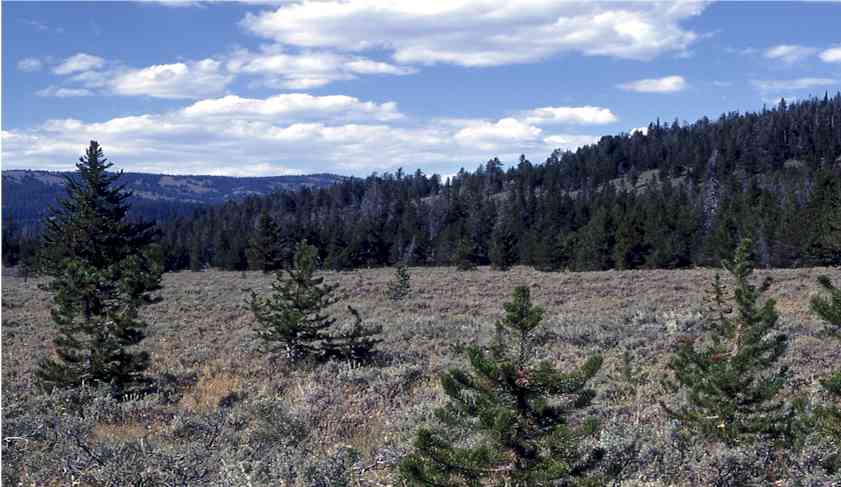|
Description:
Encroachment of native coniferous trees into
Western rangelands reduces available area for
grazing livestock and wildlife.
Management Guidelines:
Type and Class of
Livestock:
Goats and sheep.
Grazing Objective:
Stocking rate should achieve removal of more
than half of the terminal leaders and lateral
branches of young pine trees. |

Photo by Melissa Baynes,
University of Idaho |
|
References:
Olson, K.C., R.D. Wiedmeier, J.E. Bowns, and R.L.
Hurst. 1999. Livestock response to multispecies
and deferred-rotation grazing on forested
rangeland. Journal of Range Management.
52:462-470.
McLean, A. and M.B. Clark. 1980. Grass, trees,
and cattle on clearcut-logged areas. Journal
of Range Management 33:213-217.
DelCurto, T., M. Porath, C.T. Parsons, and J.A.
Morrison. 2005. Management strategies for
sustainable beef cattle grazing on forested
rangelands in the Pacific Northwest.
Rangeland Ecology and Management 58:119–127. |